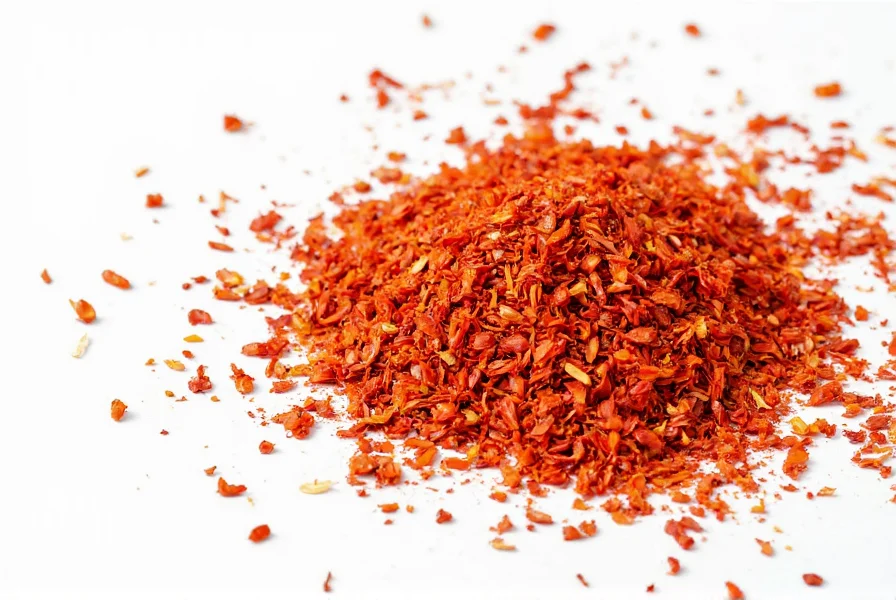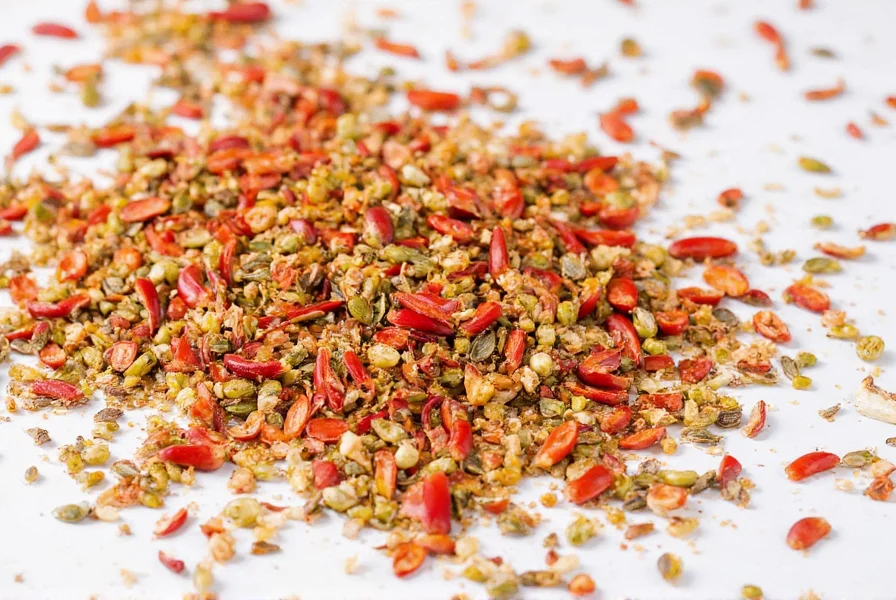Understanding what pepper flakes are and how to use them properly can transform your cooking. Unlike powdered spices, pepper flakes offer a distinctive texture and controlled heat release that makes them invaluable in many culinary traditions. The primary varieties used for commercial pepper flakes include cayenne peppers, which provide consistent heat, and sometimes blends of different chili types to create complex flavor profiles.
What Exactly Are Pepper Flakes?
Pepper flakes consist of dried chili peppers that have been crushed into small fragments. The mixture typically includes both the pepper's flesh (flakes) and seeds, which contain most of the capsaicin responsible for heat. This composition creates a product with variable heat intensity in each pinch—some pieces deliver mild warmth while seeds provide intense spice.
The most common commercial pepper flakes in American markets are made primarily from cayenne peppers, though regional variations exist worldwide. In Italy, for example, peperoncino refers to similar crushed chili products often made from local pepper varieties. The color ranges from bright red to deep burgundy depending on the pepper type and drying process.

Pepper Flakes vs. Similar Spice Products
Many home cooks confuse pepper flakes with other chili-based products. Understanding these differences helps you select the right ingredient for your recipe:
| Product | Composition | Heat Level | Best Culinary Uses |
|---|---|---|---|
| Pepper Flakes | Dried crushed peppers with seeds | Moderate to high (varies) | Pizza, pasta, soups, finishing dishes |
| Chili Powder | Ground chilies + spices (cumin, garlic) | Mild to moderate | Tacos, chili, rubs, seasoning blends |
| Cayenne Pepper | Fine powder of pure cayenne | High and consistent | Baking, sauces, precise heat control |
| Crushed Black Pepper | Coarsely ground black peppercorns | Mild, pungent | Steaks, salads, finishing dishes |
Types and Heat Levels of Pepper Flakes
Not all pepper flakes deliver the same heat experience. The Scoville scale measures chili heat, and pepper flakes can range dramatically:
- Mild varieties (500-2,500 SHU): Often made from Anaheim or poblano peppers, suitable for subtle heat
- Medium heat (30,000-50,000 SHU): Standard cayenne-based flakes found in most supermarkets
- Hot varieties (100,000+ SHU): May include habanero or ghost pepper flakes for extreme heat
The presence of seeds significantly impacts heat level. Some specialty products remove seeds for milder flavor, while others retain them for maximum spice. When shopping for how to choose quality pepper flakes, look for vibrant color and check expiration dates, as potency diminishes over time.
Optimal Culinary Applications
Mastering how to use red pepper flakes in cooking requires understanding their unique properties. Unlike powdered spices that distribute evenly, pepper flakes release heat gradually:
Add them early in cooking for infused, mellow heat throughout the dish, or sprinkle at the end for distinct spicy bursts. They excel in:
- Oil infusion: Heat flakes in olive oil first to distribute flavor evenly
- Finishing touch: Sprinkle on pizza, pasta, or roasted vegetables
- Marinades: Combine with acids to help distribute heat
- Preserved oils: Create flavorful chili oil for dipping or drizzling

Nutritional Profile and Health Considerations
Pepper flakes offer more than just heat. A single teaspoon (about 2g) contains:
- Approximately 6 calories
- 17% of daily vitamin A needs
- Small amounts of vitamin C and potassium
- Capsaicin, which may boost metabolism
Research suggests capsaicin in pepper flakes nutritional benefits may support cardiovascular health and provide anti-inflammatory effects. However, those with sensitive digestive systems should moderate intake, as excessive consumption can cause discomfort. Always start with small amounts when experimenting with new types of pepper flakes to gauge your tolerance.
Creative Uses Beyond Sprinkling
Expand your culinary repertoire with these innovative applications of pepper flakes:
- Compound butter: Blend softened butter with pepper flakes and herbs
- Vinegar infusion: Create spicy vinegar for dressings and pickling
- Bread and dough: Incorporate into focaccia or pizza crust
- Chocolate pairing: Add subtle heat to dark chocolate desserts
- Cocktail rim: Mix with salt for spicy margarita glasses
For long-term storage, keep pepper flakes in an airtight container away from light and heat. Properly stored, they maintain potency for 1-2 years, though flavor gradually diminishes. Freezing extends shelf life significantly for those who buy in bulk.
Frequently Asked Questions
What's the difference between pepper flakes and crushed red pepper?
There is no practical difference - 'crushed red pepper' is simply the common commercial name for pepper flakes in many American markets. Both terms refer to dried, crushed chili peppers containing flakes and seeds.
Can I substitute chili powder for pepper flakes?
Not directly. Chili powder contains additional spices and has finer texture. For substitution, use half the amount of cayenne pepper (not chili powder) to approximate heat level, but recognize you'll miss the textural element of flakes.
Why do some pepper flakes have different colors?
Color variation comes from different chili varieties used and their ripeness at harvest. Red indicates fully ripe peppers, while some products may include orange or purple flakes from specific cultivars. Color doesn't necessarily indicate heat level.
How can I reduce the heat of pepper flakes in a dish?
Add dairy (milk, yogurt, cheese), acid (lemon juice, vinegar), or sweetness (honey, sugar). These components bind to capsaicin. For future reference, remove seeds before crushing peppers for milder flakes.











 浙公网安备
33010002000092号
浙公网安备
33010002000092号 浙B2-20120091-4
浙B2-20120091-4